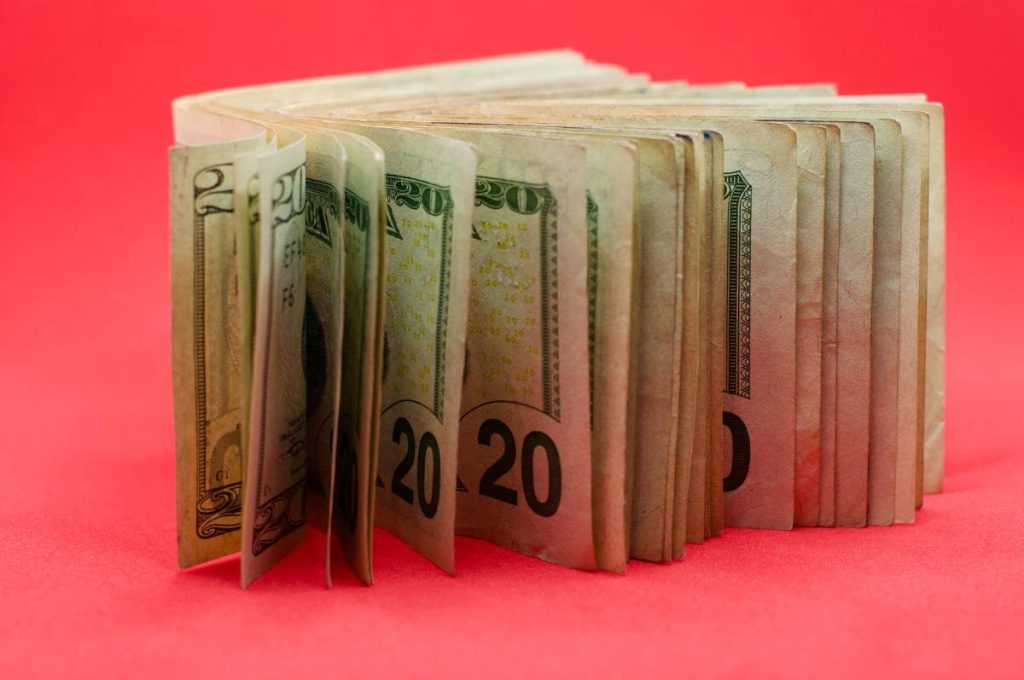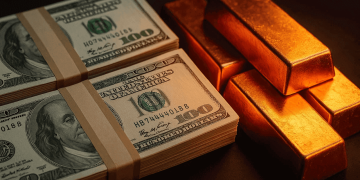The Power of Compounding Through Dividends
In an investment landscape often obsessed with high-octane growth and AI-fueled momentum trades, Dividend Aristocrats stand as a symbol of stability, discipline, and long-term wealth creation. These elite companies have increased their dividends consistently for at least 25 consecutive years, a feat that requires operational resilience, strong cash flow management, and a shareholder-first philosophy. In 2025, as markets digest macro volatility, geopolitical shifts, and changing interest rate dynamics, Dividend Aristocrats offer a compelling value proposition for investors seeking reliable income streams and capital preservation.
What Qualifies a Company as a Dividend Aristocrat?
To earn the title of a Dividend Aristocrat, a company must fulfill a strict set of criteria:
- Be a member of the S&P 500 Index
- Have increased its dividend payout for a minimum of 25 consecutive years
- Possess a market capitalization of at least $3 billion
- Exhibit high liquidity, with significant daily trading volume
These companies represent a cross-section of industries including consumer staples, industrials, healthcare, financials, and utilities. Their ability to maintain—and grow—dividends across multiple economic cycles makes them favorites among income-focused investors, retirees, and portfolio managers looking for ballast during turbulent periods.
Top Dividend Aristocrats to Watch in 2025
1. Procter & Gamble Co. (PG)
Sector: Consumer Staples
Dividend Yield: ~2.5%
Years of Consecutive Dividend Growth: 67
P&G’s consistency is legendary. From Pampers to Gillette, its vast portfolio of household brands delivers predictable earnings regardless of economic conditions. The company recently posted a 5% organic sales increase despite inflationary pressures, a testament to its pricing power. According to Morningstar’s equity analyst Erin Lash, “P&G’s brand strength and supply chain integration make its dividend among the most secure in the S&P 500.” With a payout ratio of just under 60%, there’s still ample room for increases.
2. Johnson & Johnson (JNJ)
Sector: Healthcare
Dividend Yield: ~3.1%
Years of Consecutive Dividend Growth: 62
J&J remains a cornerstone for income investors due to its diversified business segments—pharmaceuticals, medical devices, and consumer health. Even after spinning off Kenvue, the company has maintained a fortress balance sheet with more than $30 billion in cash. Experts at Bank of America recently reiterated a “Buy” rating, noting the company’s strong late-stage drug pipeline and robust free cash flow, which supports long-term dividend growth well above inflation.
3. McDonald’s Corp. (MCD)
Sector: Consumer Discretionary
Dividend Yield: ~2.3%
Years of Consecutive Dividend Growth: 47
Despite challenges in international markets, McDonald’s continues to show remarkable resilience. Its asset-light franchise model ensures consistent margin expansion, while strategic tech investments in digital ordering and loyalty apps are driving engagement. “MCD is a cash machine,” says CFRA analyst Arun Sundaram. “Its global reach, real estate ownership, and pricing flexibility give it one of the safest dividends in its category.” McDonald’s plans to increase its global store count by 5% annually, supporting further dividend hikes.
4. Chevron Corp. (CVX)
Sector: Energy
Dividend Yield: ~4.2%
Years of Consecutive Dividend Growth: 37
As one of the few energy giants in the Aristocrats list, Chevron benefits from a lean balance sheet and disciplined capital expenditure. Its recent acquisition of Hess strengthens its upstream portfolio, especially in Guyana. Analysts at Goldman Sachs point out that CVX’s break-even oil price is now below $50 per barrel, making its dividend sustainable even in a downturn. The company’s focus on returning capital—through both dividends and buybacks—makes it a favorite for income-seeking investors in the energy sector.

5. Coca-Cola Co. (KO)
Sector: Consumer Staples
Dividend Yield: ~3.0%
Years of Consecutive Dividend Growth: 62
Coca-Cola’s ability to maintain consistent growth across geographies and product lines is unparalleled. From soda to bottled water and energy drinks, the beverage behemoth’s reach is global and evergreen. With strong pricing strategies and increasing penetration in emerging markets, KO continues to deliver stable earnings. “Coca-Cola’s dividend is backed by a diversified revenue stream and an unmatched distribution network,” explains JPMorgan’s beverage analyst Andrea Teixeira. With a modest payout ratio and low debt-to-equity ratio, KO is primed for continued dividend growth.
6. AbbVie Inc. (ABBV)
Sector: Healthcare
Dividend Yield: ~3.8%
Years of Consecutive Dividend Growth: 52 (including Abbott legacy)
Post the Humira patent cliff, AbbVie has successfully transitioned its portfolio toward newer drugs like Rinvoq and Skyrizi, which now represent over 30% of its revenue. The company’s robust R&D pipeline and recent regulatory approvals have increased analyst confidence in its long-term profitability. Citi’s biotech team suggests, “AbbVie’s dividend is well-covered and will likely see moderate growth, especially as cost-cutting initiatives kick in during 2025.” Its free cash flow yield remains above 8%, underscoring the dividend’s sustainability.
7. 3M Company (MMM)
Sector: Industrials
Dividend Yield: ~5.3%
Years of Consecutive Dividend Growth: 66
Despite recent legal settlements related to PFAS and earplugs, 3M remains a strong dividend payer with a high yield and a long payout history. The company is executing a strategic restructuring, aiming to spin off its healthcare unit and streamline operations. “Once the legal overhang fades, MMM could be an income gem again,” says RBC Capital Markets. Even during its litigation woes, the company has maintained its dividend growth, reflecting management’s commitment to income investors.
8. PepsiCo Inc. (PEP)
Sector: Consumer Staples
Dividend Yield: ~2.9%
Years of Consecutive Dividend Growth: 52
PepsiCo’s combination of snack foods and beverages gives it a unique moat in the consumer space. Strong pricing power and cost control have helped it beat earnings estimates for the last six quarters. UBS analysts expect continued dividend growth fueled by strong free cash flow and product innovation. “PEP’s dividend is as reliable as the sunrise,” quips one analyst. With low leverage and global brand power, PepsiCo remains a top pick for conservative dividend growth strategies.
Evaluating Dividend Sustainability: Expert Criteria
Dividend growth is meaningless without sustainability. Experts evaluate payout viability using a mix of financial ratios and business fundamentals:
- Payout Ratio: Ideally below 70% to ensure room for reinvestment and shock absorption
- Free Cash Flow Yield: A high FCF yield (5–8%) indicates strong ability to fund dividends internally
- Earnings Consistency: Steady or growing earnings reduce the risk of dividend cuts
- Debt Metrics: Low net debt/EBITDA ratios suggest less financial strain during downturns
- Industry Cyclicality: Non-cyclical sectors like staples and healthcare are preferred for dividend dependability
The Role of Dividend Aristocrats in a Diversified Portfolio
While they may not deliver explosive returns like small-cap tech or crypto, Dividend Aristocrats serve an essential function in long-term portfolios. They help anchor total return strategies, provide inflation-resistant income, and reduce volatility during bear markets. Financial advisors often recommend a core-satellite approach—using Aristocrats as the “core” allocation with satellites in growth or thematic sectors.
Dividend Aristocrat ETFs for Instant Exposure
For those seeking exposure without picking individual stocks, several ETFs track Dividend Aristocrats:
- ProShares S&P 500 Dividend Aristocrats ETF (NOBL): Focuses on companies with 25+ years of dividend growth
- SPDR S&P Dividend ETF (SDY): Broader basket of consistent dividend payers
- iShares Select Dividend ETF (DVY): Emphasizes high-yield dividend stocks with strong fundamentals
- Vanguard Dividend Appreciation ETF (VIG): Invests in companies with a history of growing dividends over time
Risks to Monitor in 2025
Despite their strengths, Dividend Aristocrats are not immune to risks:
- Rising Interest Rates: Higher yields in bonds can make dividend stocks less attractive
- Regulatory Risks: Especially in healthcare and energy sectors
- Cost Inflation: Margin pressures can affect payout ratios
- Currency Headwinds: Multinationals face FX risk in global earnings translation
Still, the historical track record is clear: Dividend Aristocrats have outperformed the broader S&P 500 over multiple decades, with lower volatility and superior risk-adjusted returns.
Conclusion: Income with Integrity and Stability
In a world where financial markets are increasingly unpredictable, Dividend Aristocrats remain beacons of stability and discipline. These companies not only reward shareholders but also reflect sound governance, operational excellence, and a long-term focus. Whether you’re a retiree seeking passive income, a fund manager hedging growth exposure, or a young investor looking to build generational wealth, incorporating Dividend Aristocrats into your portfolio is a timeless strategy grounded in fundamental strength and shareholder trust. As always, due diligence, diversification, and periodic review remain key to maximizing the power of dividends.













































